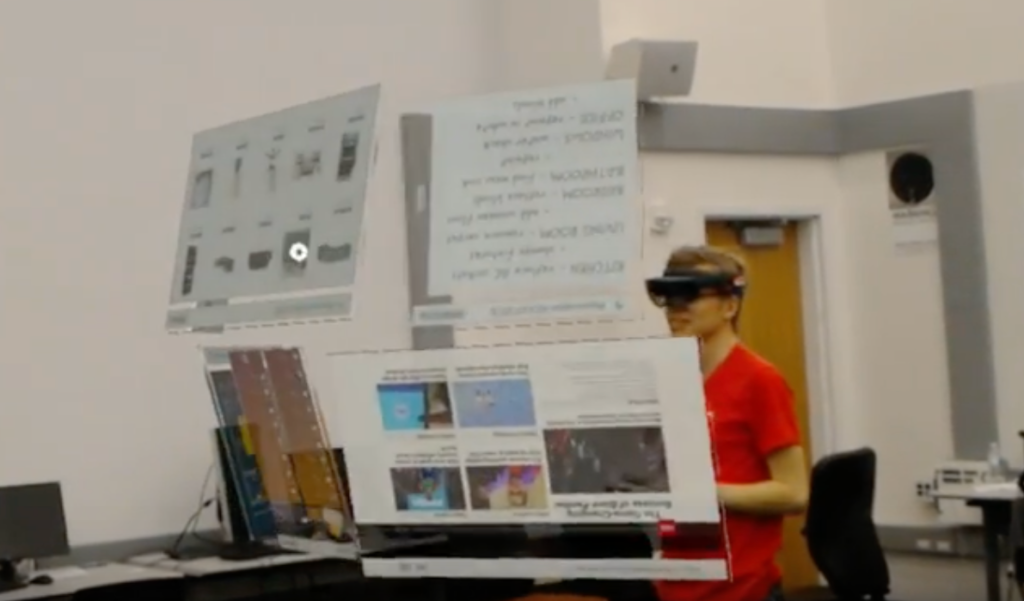
Augmented reality will eventually replace our mobile devices as the primary way of accessing information. However, current interfaces provide little support to walking and the variety of actions we perform in the real world. To achieve its full potential, augmented reality interfaces must support the fluid way we move in the world. We explored how different adaptation strategies can contribute towards this goal. We evaluated design alternatives through contextual studies and identified the key interaction patterns that interfaces for walking should support. We also identified desirable properties of adaptation-based interface techniques, which can be used to guide the design of the next-generation walking-centered augmented reality workspaces.
Our vision for this project was to use adaptation to: 1) support the use of AR interfaces while walking; and 2) minimize the effort required to adjust the layout to a new environment. Within all the possible sources of position adaptation, we focused on those that could be easily obtained from sensors available in AR headsets, in particular: 1 – information about the user position in space (e.g., body position, orientation, or speed); 2 – information about the physical surroundings (e.g., position of walls and other surfaces); and 3 – information about the current layout (relative position of the windows to each other and in the field of view).By the end of the process, we reduced the initial set of options to four basic behaviors that demonstrated high potential to support different goals and interaction styles:
Follow – Adaptation to the user position. Maintains the relative positions of the element and the user.
Rotation – Adaptation to the user orientation. Maintains the relative positions and orientations of the element and the user’s head.
Attraction – Adaptation to surfaces. Moves the window to the surface closest to the user and changes the orientation proportionally to the wall distance.
Auto-Centering – Adaptation to user movement while walking. Follows the user as in Follow, but rotates to maintain the relative orientation to the user body.

